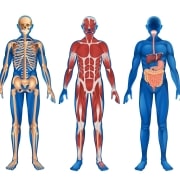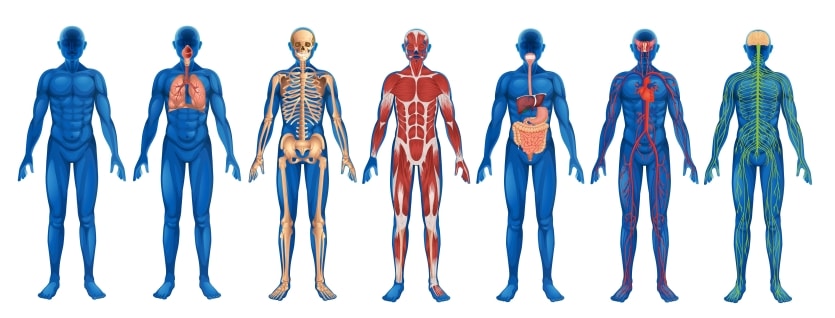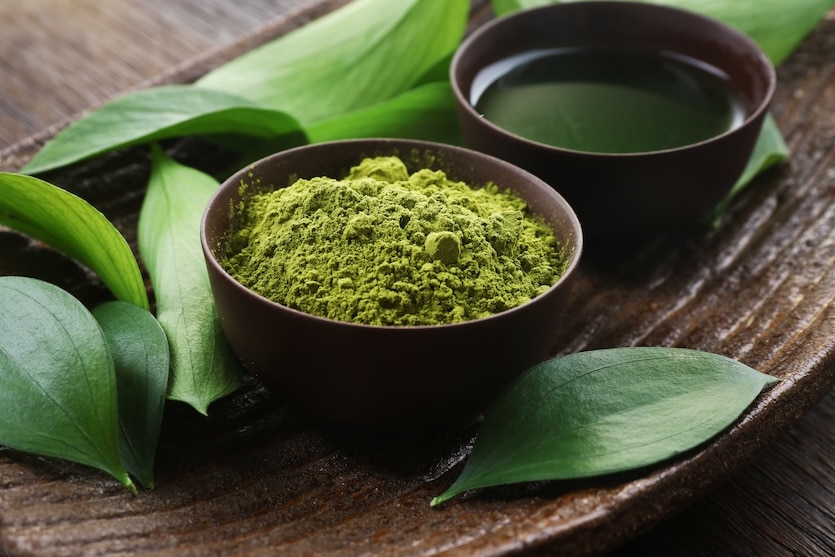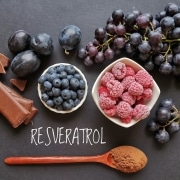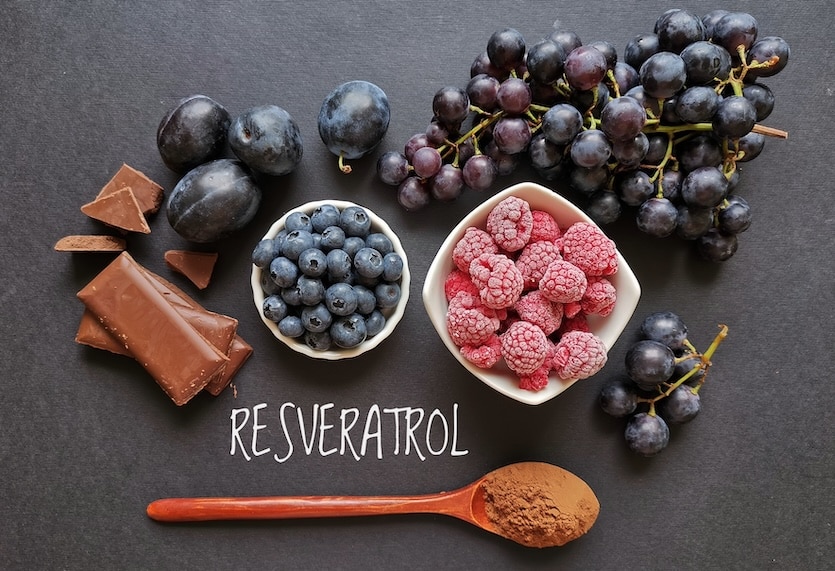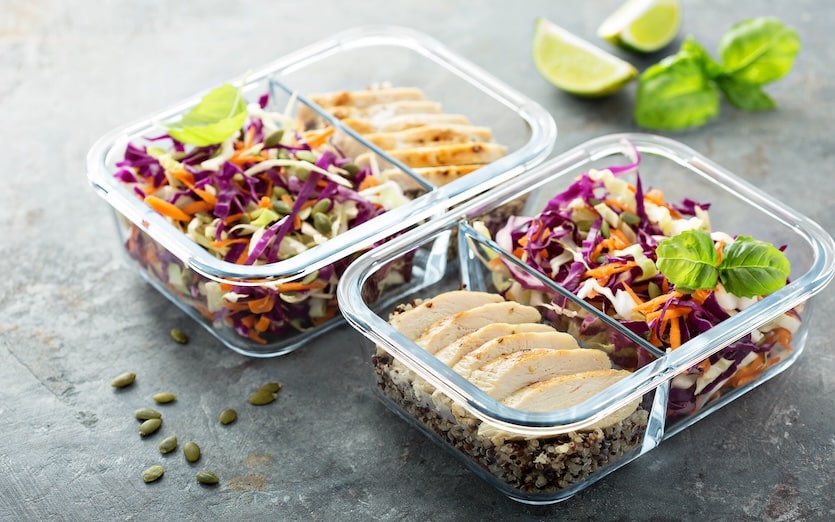a:8:{s:8:”location”;a:1:{i:0;a:1:{i:0;a:3:{s:5:”param”;s:4:”page”;s:8:”operator”;s:2:”==”;s:5:”value”;s:5:”75881″;}}}s:8:”position”;s:6:”normal”;s:5:”style”;s:7:”default”;s:15:”label_placement”;s:3:”top”;s:21:”instruction_placement”;s:5:”label”;s:14:”hide_on_screen”;s:0:””;s:11:”description”;s:0:””;s:12:”show_in_rest”;i:0;}
In the world of nutrition, some nutrients stay in the background despite playing crucial roles in your health. Cysteine is one such compound. Often referred to as l-cysteine, it comes in a few different molecular derivatives like N-Acetyl-L-cysteine or cystine. And though it may not appear in popular headlines, this semi-essential amino acid plays a distinct role in protein synthesis, providing diverse benefits for your health and wellness—and beyond.
Understanding L-Cysteine
Amino acids are the building blocks of proteins, and twenty are needed for protein synthesis. Nine of these amino acids are essential, meaning they must be consumed from your diet—your body can’t make them on its own. L-cysteine is semi-essential. A certain amount can be synthesized from other amino acids like methionine and serine, but during heightened protein synthesis—such as illness or growth spurts—your body relies on dietary intake of L-cysteine to get all it needs.
L-cysteine’s chemical structure contains a thiol (-SH) functional group, creating unique chemical properties for protein synthesis. It allows L-cysteine to form disulfide bonds with other cysteine molecules, which stabilizes the structure of many proteins. L-cysteine also serves as a precursor to glutathione, a crucial antioxidant for cellular protection.
Key Health Benefits of L-Cysteine
Over the last few years, a variety of benefits have been attributed to L-cysteine, contributing to its uptick in the food supplement industry. Some of the most notable include:
- Protein synthesis: Supports the synthesis of proteins that takes place in every single cell in your body to sustain vital life functions and structures.
- Antioxidant power: Increases levels of glutathione in your body to help neutralize harmful free radicals and protect cells from oxidative damage. Antioxidants are essential to support liver detoxification and brain and lung function.
- Strengthens hair: Keratin is an abundant protein in your skin and hair and contains high amounts of L-cysteine as building blocks.
- Regulates immune system: Promotes changes in production levels of various enzymes and effector molecules your immune system needs.
- Mucolytic properties: Helps to break down mucus offering therapeutic benefits for your respiratory tract and bronchiole passages.
- Bone Health: L-cysteine is crucial for calcium absorption essential for strong bones. It also plays a key role in slowing down bone loss by reducing inflammation and oxidative stress.
Future Implications
Beyond its biological benefits, L-cysteine is also widely used in industrial applications. Its ability to breakdown disulfide bonds in gluten makes it an ideal dough conditioner in bread making. It’s also used to create flavors and fragrances.
As research continues to unravel the intricate biological properties of L-cysteine, more applications and avenues for exploration will emerge.
From its indispensable role in protein synthesis and antioxidant defense, to its diverse applications in foods and supplements, L-cysteine is a remarkable and versatile amino acid. Although it hasn’t caught the mainstream spotlight just yet, appreciation for this special amino acid and its unique benefits are here to stay.
The human body’s capability is mind-boggling. Countless conscious and unconscious functions keep you moving, thinking, and…well, living. Like a well-oiled machine, it performs the same critical processes day after day. But of course, your body is not a machine—it’s an organism.
As it turns out, humans are pretty complex. And to understand how the body works, we need to understand its parts—that’s where this article comes in.
What is the Human Body Made of?
The human body is made up of trillions of cells. As the smallest living part of the human body, they’re made up of molecules which, in turn, are composed of elements. About two hundred different types of cells are found in the body, and each fulfills a different function. Red blood cells, for example, transport oxygen, while white blood cells help protect the body from infection.
And though it may seem strange, your cells are not permanent fixtures. Billions of cells in your body die every day—and billions are regenerated. This cellular turnover is a natural part of life within the human organism. Some cells, like skin cells, die and regenerate very frequently. Others, such as some cells found in bones, have much longer life cycles.
Not all cells work independently—some work in groups to perform larger body functions. But more on that in the next section.
A Closer Look at the Human Organism
While it is important to study cells and understand their roles, sometimes we need to look at the bigger picture. The structure of the human body can be viewed in several levels, each slightly more zoomed out than the last. They include: cells, tissues, organs, organ systems, organism. Let’s break them down.
- Cells: Your body is made up of trillions of cells—with more than two hundred distinct cell types that perform a specific function. As mentioned above, cells are the smallest living piece of a human body. And billions of your cells die and regenerate every day.
- Tissues: Similar cells that group together to perform a joint function make up body tissue. The four main types include connective tissue, epithelial tissue, muscle tissue, and nervous tissue. Each performs a general function but can also be broken down into specific sub-tissues with more defined functions. Muscle tissue, for instance, contracts and expands to move parts of the body—this is a general function. While cardiac muscle is a tissue that performs a specific job: contracting and expanding to pump blood through the body.
- Organs: When two or more tissue types team up to perform a specific function, they form an organ. Although most of your body’s organs contain all four types of tissue. Organs perform specific tasks necessary for your body to function. The heart, for example, pumps oxygenated blood throughout your body. Your lungs bring oxygen into your body and expel carbon dioxide. And your liver helps remove toxins.
- Organ systems: Groups of organs that work together form organ systems. For example, the brain and spinal cord are two distinct organs that contain nerves that transfer information throughout your body—both belong to the nervous system. The human body has eleven organ systems: cardiovascular, digestive, endocrine, immune, integumentary, lymphatic, musculoskeletal, nervous, reproductive, respiratory, and urinary.
- Human organism: All together these smaller pieces create a single living entity—the human organism. From the cellular level to your organ systems, each part of your body performs functions with the same ultimate goal: keeping you living and healthy.
Five Organs You Can’t Live Without
While each part of the human organism fulfills an integral role, some are more important than others. The human body contains five vital organs you can’t survive without—your brain, heart, kidneys, liver, and lungs. Although its best to approach health and nutrition holistically, these key organs can help orient you as you study the intricacies of the human body.
More About Organ Systems
Now let’s take a closer look at your body’s eleven organ systems. As mentioned, each is made up of at least two organs as well as other tissues. Their unique body benefits are highlighted below:
- Cardiovascular system: Made up of three major components—the heart, blood vessels, and blood—this system transports oxygen, nutrients, and carbon dioxide throughout your body. It works closely with the respiratory system to bring oxygen in and eject carbon dioxide out.
- Digestive system: Your mouth, esophagus, stomach, and both your large and small intestines are the primary parts of this system, also called the gastrointestinal system. Certain nutrients are needed to survive, and thanks to your digestive system, your body can take in food and water, process it, and extract these vital nutrients.
- Endocrine system: Your hypothalamus, pituitary, and thyroid glands release hormones into your body to activate changes and guide biological processes. Think of this system as an inner-body communication network that helps to regulate growth and development, homeostasis (constant internal balance), metabolism, mood, reproduction, sexual function, and your sleep-wake cycle.
- Immune system: Not only does this proactive system defend your body against disease, it also plays a part in protecting it from pathogens. It includes your spleen, tonsils, thymus, and leukocytes (white blood cells).
- Integumentary system: Made up of your skin, hair, and fingernails, this system is responsible for protecting against external microorganisms and for keeping fluids within your body.
- Lymphatic system: Three organs—the lymph nodes, the lymph, and lymph vessels—help protect your body against diseases and infections.
- Musculoskeletal system: As the name suggests, this system’s primary function is to use muscles and the skeleton to support your body’s soft tissue and allow for movement. And it may surprise you it also includes cartilage, tendons, and ligaments, which help connect bones and muscles to each other and to other parts of the body.
- Nervous system: Composed of the brain, spinal cord, nerves, and sensory organs (skin, eyes, ears, tongue, and nose) this system’s primary function is to gather, transfer, and interpret the sensory information your body experiences. And, when necessary, it alerts other organs and systems. For example, if you see a car careening towards you (a visual stimulus), your nervous system may activate your fight-or-flight response, which tells your heart to beat more quickly, your lungs to breathe more rapidly, and your adrenal glands to release adrenaline.
- Reproductive system: This life-giving system is responsible for conceiving and birthing offspring. The associated organs include genitalia, fallopian tubes, the uterus, the prostate, and more. It’s also responsible for producing gametes (or sex cells) and sex hormones—estrogen and testosterone—which play vital roles in human development and growth.
- Respiratory system: The organs in this system—the lungs, larynx, pharynx, trachea, and diaphragm—are responsible for bringing oxygenated air into the body and expelling carbon dioxide. This vital system works closely with the cardiovascular system to provide your body with oxygen, which helps cells produce energy.
- Urinary system: Also called the excretory system, it utilizes your kidneys, bladder, ureters, and urethra to remove water and waste materials from your body and help to maintain pH.
Understanding the Human Body: An Ongoing Journey
The human organism is so complex that it might seem impossible to fully comprehend—especially with a single article. But learning its basic structure is your first step to understanding how your body works.
So don’t stop here! Use what you’ve just read as motivation to dive deeper into one of nature’s biggest marvels: the human body.
Traditional medicine has used plants to support health for centuries. And over time, many of these plants—and their health benefits—have been adopted throughout the world. Think milk thistle.
Milk thistle, also known as Mary thistle or holy thistle, is a flowering plant native to Mediterranean countries. Traditionally, it has been used to support liver and gallbladder health. But what are its actual benefits and uses? Read on to learn more about milk thistle, its common uses, and what recent research has uncovered about this mysterious plant.
What is Milk Thistle?
Related to daisies and ragweed, milk thistle—or Silybum marianum—is a native to Europe. This district plant has purple flowers and prickly leaves with white veins running through them (hence the name milk thistle). Brought to the Americas by colonists, it can now be found throughout the United States, South America, Africa, Asia, and Australia.
The main ingredient of interest in milk thistle is silymarin—a chemical compound thought to have antioxidant properties. Silymarin often refers to the plant itself, though this is somewhat inaccurate, as it’s just one of many substances found in the plant. Most milk thistle products are made from silymarin extracted from milk thistle seeds.
Silymarin Supports Liver Health
Your liver is one of the hardest-working organs in your body. It’s responsible for detoxifying your blood, metabolizing key nutrients, storing essential vitamins and minerals, and so much more. Your heart may pump 80 beats a minute, but your liver performs over 500 different vital functions at once. The only organ with more functions is the brain.
Milk thistle has traditionally been used for its ability to support liver health, and modern science focuses on these benefits of silymarin’s benefits:
- Antioxidant—When your liver metabolizes toxic substances, free radicals can be produced which damage the liver. Potent antioxidants, like silymarin, “scavenge” for free radicals and neutralize them. This may protect the liver from damage from oxidative stress.
- Cellular regeneration—Silymarin is known to support the normal process of turnover and regeneration of cells in the liver. The liver’s ability to carry out this process is crucial to its function because of how much it interacts with toxins, free radicals, drugs, and other harmful substances.
- Detoxification—Processing and eliminating toxins from the body is one of the liver’s main responsibilities. Silymarin may support this process and make it more efficient for the liver.
- Protection from toxins—Silymarin may protect the liver from oxidative stress. It can also help protect the liver from drugs, environmental pollutants, and other harmful substances.
- Balanced immune response—Silymarin may support immunomodulation, the process of either reducing or enhancing the immune response to keep it in homeostasis (balance).
These benefits are often broadly referred to as milk thistle’s hepatoprotective effects—acting on the health of liver cells overall. When your liver synthesizes essential proteins, or clears hormones from your blood, it’s relies on healthy liver cells to accomplish it. It’s why silymarin is said to be such a broad supporter of liver health.
Other Benefits of Silymarin
Although the liver is one of the main focuses of research around milk thistle and silymarin, other health benefits have emerged as well. Some other significant applications for milk thistle include:
- Gallbladder: This small organ is responsible for storing and releasing bile into the stomach during digestion, specifically for the breakdown of fats. But the liver is responsible for bile production. Milk thistle supports the production and flow of bile, which may also support the gallbladder’s function.
- Heart health: Some studies have shown that milk thistle can support healthy cholesterol levels, which is an important part of maintaining heart health over time.
- Weight management: A 2016 study linked silymarin consumption to healthy weight management in mice. This phenomenon has not yet been observed in human studies, but it’s an exciting example of possible applications for milk thistle.
Adding Milk Thistle to Your Diet
Parts of the milk thistle plant are edible, including the roots, flowers, and young stalks. When the spines are removed, the leaves are also edible both raw and cooked. That being said, most people do not add silymarin to their diet by eating the milk thistle plant itself—instead, they rely on dietary supplements.
As a supplement, milk thistle is typically ingested as an extract. There is no standard recommended daily intake for milk thistle extract, but studies have shown that doses of up to 700 milligrams can be taken three times a day for up to six months.
Is Milk Thistle Safe to Consume?
Milk thistle is generally considered safe to take by mouth. Even in studies with extremely high doses showed very few side effects. Those reported typically fall under some form of stomach discomfort, like nausea or bloating.
While rare, some people are allergic to the Asteraceae/Compositae family of plants and may experience a reaction to milk thistle. Pregnant women are generally advised to avoid milk thistle, as there’s not enough data about its safety during pregnancy.
As with any dietary supplement, it’s important to ensure milk thistle will not negatively interact with any medications you are already taking. It’s a good idea to consult a doctor before adding a milk thistle supplement to your diet.
The Bottom Line
If you’re looking for a natural way to support and protect your liver, milk thistle may be a great addition to your supplement regimen. Studies tie it to several organ and body benefits, especially when used as part of a larger health and wellness approach.
Keep an eye on this one. Further research will likely uncover more applications for this diverse ancient traditional herb.
References
https://www.ncbi.nlm.nih.gov/books/NBK11896/
https://www.webmd.com/digestive-disorders/milk-thistle-benefits-and-side-effects
https://www.mayoclinic.org/drugs-supplements-milk-thistle/art-20362885
https://www.nccih.nih.gov/health/milk-thistle
https://www.healthline.com/nutrition/milk-thistle-benefits
https://www.medicalnewstoday.com/articles/320362
https://www.ediblewildfood.com/milk-thistle.aspx#
https://www.webmd.com/vitamins/ai/ingredientmono-138/milk-thistle
Green tea is one of the most popular beverages in the world. It has been a staple drink in China for thousands of years, where the practice of steeping tea leaves originated. From there it spread to other east Asian countries and eventually, Europe. Green tea has several health benefits and has been consumed both medicinally and for pleasure throughout history.
Green tea comes in a variety of forms, from tea leaves to matcha powder, but this article will focus on one form in particular: green tea extract.
Products ranging everywhere from energy drinks to dietary supplements include green tea extract as an ingredient. And, as a consumer, you might be wondering why. Read on for a detailed breakdown of what green tea extract is, its health benefits, and more.
What is Green Tea Extract?
Traditionally, green tea is prepared by steeping dried tea leaves in hot water. The leaves are then strained out using a tea bag or colander and the remaining liquid—the tea—is consumed. Green tea extract comes from those same dried tea leaves but is created using a different process.
To produce green tea extract, tea leaves are first dried, and bathed in solvents to extract the active compounds. Then the extract is purified to remove the solvent and any impurities. Finally, the pure extract is dried and powderized. This extract contains the same active ingredients as traditionally prepared green tea, but in a far more concentrated form. Green tea extract is often sold as a powder, liquid, or inside tablets and capsules—and in terms of active ingredients, one capsule is equal to one full glass of tea.
In short, green tea extract is a concentrated form of green tea that contains many of the same active ingredients as a glass of green tea. So, what’s the big deal? Let’s take a look at what those active ingredients are and what they mean for your health.
What’s in Green Tea Extract: Active Ingredients and Constituents
The health benefits of green tea—and, by extension, green tea extract—come from polyphenols. These chemical compounds, which are found in a variety of plants, are powerful antioxidants (substances that help protect the body from toxins). Green tea is known to contain several different polyphenols, the most most important nutritionally is epigallocatechin gallate (EGCG).
In addition to these polyphenols, green tea extract contains another type of organic compound: alkaloids. These include caffeine, theophylline, and theobromine.
Green tea also contains an amino acid known as L-theanine, which has been the subject of recent studies for its impact on brain chemicals that support alertness, relaxation, focus, and more.
Health Benefits of Green Tea Extract
Green tea has played a role in Traditional Chinese Medicine for centuries. During the Ming Dynasty, for example, one Chinese writer described green tea’s role in supporting various aspects of health.
Thanks to more recent studies, we have even more information on the health benefits green tea extract can provide.
As mentioned earlier, green tea is rich in antioxidants. EGCG in particular, has been shown to support the body’s elimination of toxins and reduce oxidative stress. Adequate levels of antioxidants in the body promote health on a cellular level.
In some studies, green tea extract was shown to support the body’s normal fat oxidation processes, both at rest and during exercise. Fat oxidation is the process through which the body breaks fats down into substances that can then be used for energy within the body. Basically, it’s the body’s process of burning fat. Though more research is required to fully understand the way green tea extract supports fat oxidation, current studies suggest that green tea may help support a healthy body weight.
The Bottom Line
If you’re looking to improve your health on a cellular level, lose weight, or improve your short-term focus, green tea extract might be just the supplement for you. The medicinal properties of green tea have been known and used for centuries—and we’re only uncovering more as research continues.
References
https://www.ncbi.nlm.nih.gov/pmc/articles/PMC3649093/
https://www.healthline.com/nutrition/10-benefits-of-green-tea-extract#The-bottom-line
https://health.clevelandclinic.org/green-tea-extract-a-better-way-to-boost-energy-or-not
https://www.webmd.com/vitamins/ai/ingredientmono-960/green-tea
https://www.urmc.rochester.edu/encyclopedia/content.aspx?contenttypeid=19&contentid=greenteaextract
When it comes to alcohol consumption and health, one claim is repeated time-and-time-again, “A glass of red wine with dinner is good for you.” But is this actually true? Let’s investigate.
As it turns out, red wine contains the plant compound resveratrol—the factor behind many of the red wine health claims. Read on to learn what resveratrol is, how it impacts your health, and where you can find it.
What is Resveratrol?
As mentioned above, resveratrol is a plant compound, more specifically, a polyphenol. In other words, it’s a naturally occurring substance found in a variety of plants. Thought to act as an antioxidant, resveratrol helps the body rid itself of various toxins and free radicals. And this positive effect has prompted numerous studies to explore its potential health benefits.
Although much of the research surrounding resveratrol is recent, it isn’t new to most people’s diets. It’s found in common foods such as peanuts, various berries, grapes and, by extension, wine. Both red and white wine contain resveratrol, but red varieties have a much higher quantity.
Health Benefits of Resveratrol
With all the background info out of the way, let’s move to the big question: Is resveratrol good for you? The short answer is yes. But let’s take a look at why and how it impacts your health.
Some of resveratrol’s most widely accepted health benefits include:
- Antioxidant support: Numerous studies have observed ways resveratrol acts as an antioxidant. It has been shown to help the body eliminate free radicals (a type of atom that can damage cells) and reduce and prevent oxidative stress. Basically, it helps promote health on a cellular level.
- Inflammation reduction: When it comes to inflammation, resveratrol supports your body on two fronts. First, it helps prevent the production of inflammatory substances. And second, it supports a healthy inflammatory response—crucial for the health of key organs and body systems.
- Cardiovascular health: Oxidative stress in the body can negatively impact cardiovascular health (the proper function of heart and blood vessels). And as mentioned, resveratrol has been shown to support healthy inflammation and the reduction of oxidative stress—the primary reason it’s often discussed with heart health. It supports key processes in your body directly associated with keeping your heart and blood vessels functioning smoothly.
- Liver function: The liver provides vital functions in your body, including filtering the blood and breaking down harmful substances. And resveratrol has been shown to promote liver health by helping to protect it from unhealthy levels of toxicity.
- Brain aging: In some studies, resveratrol has been shown to support healthy aging of the brain.
Resveratrol and Your Diet
You now know three natural sources of resveratrol are berries, grapes, and peanuts. In grapes and berries, most of the resveratrol is found in the skin and seeds, rather than the flesh of the fruit itself. Other common resveratrol-rich foods include pistachios, dark chocolate, and cocoa.
The way a food is prepared affects the level of resveratrol. For example, 100 milliliters of red wine contains up to twice as much resveratrol as one cup of red grapes. And raw peanuts give you a lot more resveratrol than peanut butter.
| Food | Serving | Total Resveratrol |
| Peanuts (raw) | 1 cup (146 grams) | 0.37 mg |
| Peanut butter | 1 tbsp (16 grams) | 0.0025–0.0081 mg |
| Red grapes | 1 cup (151 grams) | 0.24–1.25 mg |
| Cocoa powder | 1 tbsp (7.5 grams) | 0.011–0.017 mg |
| Red Wine | 5 oz. (148 mL) | 0.03–2.15 mg |
| White Wine | 5 oz. (148 mL) | 0.01−0.27 mg |
As you build a healthy, well-balanced diet there are important factors to consider—and resveratrol intake isn’t one of them. That is, you shouldn’t change your whole diet to target resveratrol-rich foods. If you want to ingest more resveratrol, try incorporating some of the foods above into your existing diet. If you snack on raw fruit and vegetables, maybe pick up some red grapes next time you’re at the supermarket. For a sweet treat, swap milk chocolate for dark chocolate—you get the idea.
Another way to increase resveratrol intake is through supplementation. A glass of red wine, one of the best sources of resveratrol, has typically less than 2 mg of resveratrol per serving. A supplement can provide ten times this amount, or even more.
Resveratrol Side Effects
If all of your resveratrol intake is coming by diet and quality supplements, it’s unlikely you’ll see any negative side effects. Resveratrol is not a toxic substance, and your body can easily handle up to five grams per day.
In higher doses, resveratrol may cause gastrointestinal distress. If you choose to take a supplement, as always, consult with a doctor first.
The Bottom Line
Resveratrol has been shown to be a powerful antioxidant to help promote cardiovascular and neurological health. Benefits can come when it’s taken as a supplement or by eating foods that naturally contain resveratrol—yes, even that much talked about glass of red wine. So cheers to you and your health!
As modern neuroscience delves deeper into the complexities of the human brain, gamma-aminobutyric acid, or GABA, remains a key player in this intricate biochemical orchestra.
GABA has become a popular supplement ingredient because it promotes a calm nervous system and feelings of relaxation. If you’re curious about how it works, you’re in the right place. This article discusses your brain’s physiology, GABA’s role, and how to support healthy GABA levels in your brain.
What Is GABA?
GABA is an amino acid neurotransmitter, meaning it delivers messages from one nerve cell to the next. Specifically, GABA is an inhibitory neurotransmitter. It blocks messages and controls the speed at which communication takes place throughout the nervous system.
Your brain’s network of GABA-using neurons is the GABAergic system. Much like a brake pedal or a regulator, this system can:
- Slow down the flow of information
- Reduce the activity of other neurotransmitters
- Decrease the stimulation of nerve cells in the brain
Feelings of stress, anxiety, or fear are associated with nerve cell hyperactivity and over-stimulation. That’s why GABA is most-known for promoting relaxation and calm feelings.
GABA’s Health Benefits
Neuroscience can get quite technical. So, let’s zoom out and talk about the overall effect of GABA on your body and mind.
Mental Health
A big part of your mental well-being depends on your ability to process all the sensory information your brain is constantly receiving in an organized way. This is exactly what GABA does in the brain. When your GABA levels are healthy your nervous system can regulate itself, keeping your mind calm and balanced.
Sleep
GABA also plays a key role in sleep regulation. As bedtime approaches, your GABAergic system ramps up its activity, quieting your nervous system and promoting a sense of calm. This helps you transition from being awake into the first stage of sleep and so on. Hormones, like melatonin, work by targeting GABA receptors to increase the GABAergic system’s activity to calm your mind.
Alcohol
Alcohol is known to enhance GABAergic activity, which is partly responsible for its sedative effects. While a couple drinks may cause feelings of relaxation, chronic alcohol use can disrupt the GABAergic system. Over time heavy alcohol use may reduce the production of GABA in your brain and throughout your body. These effects increase the risk of mental health concerns, sleep issues, and alcohol abuse.
Get Your GABA Supplementation
Some GABA-rich food sources include brown rice, spinach, sweet potatoes, and broccoli. Various supplements are available, too. GABA is made in the body naturally, and supplementation is considered safe. It is recommended that anyone who is pregnant or breastfeeding should consult their primary care physician before taking GABA.
Studies have shown no major adverse effects from taking up to three grams of GABA in one day. The typical dosage in studies of long-term GABA use is around 120 milligrams. However, your specific dosage may vary by age, gender, and the reason you’re taking GABA. Read product labels carefully and follow their instructions—and always check with your doctor if you have any questions about what dosage is right for you.
A Path for Sustained Mental and Emotional Health
GABA is crucial to the intricate world of neurobiology. Its role as a neurotransmitter maintains the delicate balance between excitement and inhibition in your nervous system. As researchers continue to learn more about the human brain, GABA may provide a pathway towards sustained mental and emotional health for countless people.
Breathe in…breathe out. You typically do this 22,000 times a day, and yet it’s something most of us take for granted. It’s true, you don’t have to think much about it, your body just does it—first you inhale, then you exhale. But while taking a breath may seem simple at first glance, under the surface there’s a lot going on.
If you’ve ever wondered about the science behind how you breathe, you’re in the right place.
Your Respiratory System
Eleven organ systems carry out a wide variety of essential functions in your body. And your respiratory system is the one responsible for breathing.
It’s made up of numerous organs and tissues including:
- Diaphragm: This dome-shaped muscle is located at the base of your chest cavity. As it contracts, the volume of the chest cavity increases, creating a lower pressure within the chest to draw air into the body.
- Nasal Cavity and Mouth: Each breath of air enters your body through your nose or mouth. Nasal passages help to filter and humidify the air before it reaches the lungs, while your mouth serves as an alternate route.
- Pharynx and Larynx: Your pharynx connects your mouth and nasal passages to your esophagus. The larynx is the muscular organ that controls your vocal cords. Together, these structures serve as a crucial gateway to allow air to pass through to your lower respiratory tract.
- Trachea (Windpipe): This strong tube reinforced by rings of cartilage allows air to pass to and from your lungs.
- Bronchus: Your windpipe splits into two bronchi linking to each of your lungs, where they further divide into many bronchiole passages resembling the branches of a tree.
- Lungs: Your primary respiratory organs are a pair of spongy, pinkish-grey structures in your chest cavity. They inflate with air each time you inhale and deflate when you exhale.
- Capillaries: These networks of tiny blood vessels pull oxygen from your lungs into your bloodstream.
Working together, these various organs, tissues, and structures allow you to breathe, speak, smell, and more. But let’s focus on breathing.
The Process of Breathing
Breathing has two main parts—inhalation and exhalation—and each requires the coordinated effort of multiple muscles. Prior to and during inhalation your diaphragm and surrounding muscles contract. Your chest expands and your lungs fill with air. As these muscles relax, your chest contracts forcing the air out of your lungs—in other words, you exhale.
Your body isn’t inhaling and exhaling for fun, it’s fulfilling your need for oxygen.
Your cells use oxygen (and glucose) to create energy through a process called cellular respiration. For this to take place, however, oxygen needs to get from your lungs to cells throughout your body. This is where blood comes in.
Gas Exchange in the Alveoli
Your bronchial tubes branch off into smaller airways, called bronchioles. They’re connected to alveoli—tiny, grape-like air sacs in your lungs that are surrounded by capillaries. This is where gas exchange happens, one of the most important steps of breathing.
Your alveoli are like microscopic balloons, filling with air each time you breathe in. Oxygen from this air is absorbed by blood passing through the surrounding capillaries. This newly oxygenated blood is then delivered through your body by the cardiovascular system—but let’s save that for another article.
Cellular respiration creates energy; but it also creates waste products, including carbon dioxide. This carbon dioxide is contained in deoxygenated blood. When blood passes through the capillaries an exchange occurs—oxygen enters the blood (as mentioned above) and carbon dioxide exits the blood, moving to the air held in the alveoli. This air is then exhaled to expel the carbon dioxide from your body.
How to Keep Your Lungs Healthy
Your lungs are the center of your respiratory system. And healthy lungs are crucial for efficient, healthy breathing. Fortunately, there are a number of steps you can take to keep your lungs healthy and happy.
Lungs are sensitive to smoke and pollutants, and breathing these substances in can be harmful to your lung health. Cigarette smoke, including secondhand smoke, can damage the bronchioles and alveoli in your lungs, making it harder for your body to deliver oxygen to its cells. To avoid this, try to stay away from cigarette smoke and smog. If you are going to be exposed to harsh chemicals, excessive air pollution, or other damaging substances, wear a mask or respirator to filter damaging substances out of the air.
Regular exercise can also help your lungs (and heart) work more efficiently. As you exercise, your lungs and the muscles associated with breathing are working overtime to provide your body oxygen. Even light, daily exercise can strengthen your lungs, heart, and other muscles. The stronger these organs and muscles are, the better your body is at delivering oxygen to its cells.
Respiratory Conditions: Health Factors That Affect Your Lungs
Environmental factors, such as pollutants, aren’t the only things that can affect your respiratory system. Sicknesses, and chronic health conditions can also impact your ability to breathe.
Lung capacity naturally decreases with age, meaning as you get older your lungs become less efficient. For older adults, maintaining lung health through exercise and by avoiding damaging substances is extra important.
Additionally, certain health conditions may require medical assessment and intervention. Whether it’s due to asthma, severe allergies, or a persistent cold, consulting a doctor is often an important step in maintaining the health of your respiratory system. Certain illnesses, such as the common cold and flu, can develop into serious infections and even pneumonia. So if you feel like your respiratory system isn’t working as it should, it’s worth a trip to the doctor.
The Bottom Line: A Healthy Body Needs Healthy Lungs
Breathing is a vital part of life. Without oxygen your cells can’t create energy. And without your cells producing energy most organs, tissues, and other body parts can’t do their job. The brain can only go four minutes without oxygen before it suffers permanent damage.
Needless to say, a healthy respiratory system is indispensable to a healthy lifestyle. So take care of your lungs—you’ve only got two.
References
https://my.clevelandclinic.org/health/body/21205-respiratory-system
https://www.lung.ca/lung-health/lung-info/respiratory-system
https://www.nhlbi.nih.gov/health/lungs
https://craighospital.org/resources/how-we-breathe
https://www.webmd.com/lung/how-we-breathe
https://www.lung.org/lung-health-diseases/wellness/exercise-and-lung-health
In the hustle and hurry of today’s world, meal prep is all the rage. Hundreds, if not thousands, of articles, blog posts, and videos exist on the subject. Social media is full of meal-prep recipes, tips, tricks, and more. When confronted with all of this content, it’s easy to feel overwhelmed. That’s where this article comes in.
If you’re brand new to meal-prep, don’t worry—we’ll break the process down into digestible pieces, giving you the confidence and know-how to approach meal-prep like a seasoned pro (pun intended).
Meal Prepping vs. Meal Planning: What’s the Difference?
Before diving into the dos and don’ts of meal-prep, let’s get one thing out of the way: meal-prepping and meal planning are two distinct practices.
Meal planning refers to the process of plotting out your meals for a week, month, or some other period of time. Basically, you are deciding what to eat ahead of time and shopping accordingly. Think of a meal plan as a kitchen calendar: it tells you what you are going to make and when. And that’s it—there’s no chopping, simmering, or cooking involved in meal planning.
Meal prep, on the other hand, actually involves some prep work. (It’s in the name, after all.) In a kitchen setting, prep work refers to any tasks that can be completed before cooking and assembling a final dish or meal. This can be something as simple as chopping an onion or as complex as simmering and seasoning a sauce.
The goal of prep work in a professional kitchen is to cut down on the time it takes to actually cook a dish from start to finish. The same is true of meal-prep in your own house. When you meal-prep, you execute some of the steps involved in preparing a dish ahead of time. In practice, this can look a variety of ways—but more on that in the next section.
Meal prep and meal planning go hand-in-hand. In order to get started on meal-prep for the week, you need to know what you’re going to eat each day—and that requires meal-planning.
Types of Meal-prep
Meal-prep looks a little bit different for everyone, but most people follow one of three systems:
- Prepping ingredients: Much of the time and labor involved in preparing a meal is spent on peeling, chopping, dicing, etc. Think about the last meal you cooked that called for a lot of garlic—peeling and dicing each individual clove can take a while. If your time in the evenings is limited, prepping ingredients beforehand can allow you to cook fresh meals each day without spending as much time in the kitchen. This meal-prep strategy is also great for lunches. After all, who wants to cut a bunch of bell peppers first thing in the morning?
- Batch cooking: Some foods store better than others. People who batch cook as part of their meal-prep lean into this fact, cooking large portions of certain recipes all at once and saving them for later use. Often this means freezing fifteen portions of a soup or cooking enough rice for the week on Sunday and keeping it in the fridge for use throughout the week.
- Individually portioning meals: If you choose this method, you’ll be doing the prep, portioning, and assembling of a meal beforehand. Basically, you’ll be prepping a week’s worth of food, then dividing it out into separate containers for each day. When you’re finished, you’ll have a grab-and-go lunch or ready-made dinner for each day of the week. This method requires a little more preparation but saves you the most time throughout the week.
How to Meal-prep
Now that we’ve covered what meal prepping is, you probably have one question left: how can I get started?
First, you’ll need to make a meal plan. Look at your calendar and decide how many prepped meals you need for each day. There’s no right number—it’s going to depend entirely on your own needs. Next, decide what meals you want to eat each day. To simplify the planning and prepping process, try to include some overlap. For example, plan to eat the same meal for lunch at least two or three days a week.
As you plan your meals, it can be helpful to think in terms of nutritional building blocks. This may sound complicated, but it’s quite straightforward: each meal could contain a grain (quinoa, for instance), a protein (grilled chicken breast is a popular option), and fruits and vegetables. These building blocks provide a solid foundation for each meal but can be customized for variety. For example, you might prepare enough brown rice, chicken, and salad for the week, but change the final dish each day. On Monday, lunch might be chicken breast over rice with a salad on the side. Tuesday, you could use a curry sauce to transform those same ingredients into a chicken curry bowl. Wednesday, you could shred the chicken and put it in a wrap, along with the rice, and the salad. Rinse and repeat for the rest of the week.
The amount of prep work you perform beforehand depends on the meal-prep method that you choose to use. If your recipes are fairly simple, preparing the ingredients might be all you need to do. Individually portioned meals, on the other hand, will require more prep ahead of time.
Most people choose to do all of their meal prep on the same day—typically a Saturday or Sunday—but there’s no hard-and-fast rule. To get started with meal-prep, simply choose a day when you can set aside a couple of hours to prepare food. Remember to use all the appropriate food safety practices. Select a recipe (or a few recipes), gather the ingredients, and get prepping!
Meal-prep Tips and Tricks
At the end of the day, your meal-prep process is going to be unique to your schedule and your needs. And while it will inevitably take a bit of trial and error to figure your system out, here are a few tips and tricks to help you kickstart the process:
- Start with simple recipes: Meal-prep strategies can be applied to virtually any recipe, but in practice you may find it easiest (and most helpful) to stick to simple recipes. The whole point of meal-prep is to reduce the amount of time and stress it takes to prepare healthy meals throughout the week—the more moving parts a recipe has, the more time it will take you to prep and assemble. Simple recipes with only a few ingredients are typically optimal candidates for meal-prep.
- Don’t cheap out on the containers: A key element of meal-prep is preparing food—whether it’s a final meal or just ingredients—before they will be eaten. This means that your meals and ingredients will be spending anywhere from a day or two to a whole week in the fridge. During this time, you’ll want to keep your food as fresh as possible—and that means investing in some high-quality airtight containers.
- Choose ingredients that will keep: High-quality containers only go so far. At the end of the day, some foods simply spoil faster than others. As you select recipes to meal-prep, be mindful of the ingredients you are using. If something will spoil in a matter of days, plan accordingly.
- Don’t forget your freezer: When it comes to preserving ingredients or even prepared meals, the freezer is your friend. Many foods that will spoil after a week in the fridge can be kept for months in the freezer. Soups and sauces are often excellent candidates for freezing but do your research to see what you can keep in the freezer—and for how long!
- Collect a few sauce recipes: Simple food doesn’t have to be bland or boring. Although food-prep recipes are often basic, they can be easily elevated with a good sauce. Additionally, sauces are a great way to add some variety to otherwise repetitive meals. If you’re just getting started with meal-prep, a few good sauce recipes can be a gamechanger.
A bad sunburn can ruin even the best moments. Between the pain and the peeling, it can be days—a week even—before your skin returns to normal. Discomfort aside, excessive UV exposure can damage your DNA. And that’s always bad news.
To avoid all this, it’s best to slather on some sunscreen. Easy enough, right? Well, sort of.
When it comes to choosing sunscreen, the options may be overwhelming. Between active ingredients, SPF ratings, and so much more, there’s a lot to unpack. But don’t worry, we’ll break it down for you.
Why Use Sunscreen: The Dangers of UV Rays
Avoiding the discomfort of a sunburn is all the motivation most of us need to wear sunscreen. But sunscreen isn’t just about preventing sunburns. It’s about protecting your skin to keep it healthy and happy throughout your life.
Fun in the sun has many benefits. Sunshine helps you get the vitamin D you need, can boost your mood, and may even help reduce stress. But the effects of the sun aren’t all positive. The sun emits two types of ultraviolet (UV) rays—UVA and UVB—that can damage your skin. UVB rays, which have a shorter wavelength than UVA rays, are responsible for sunburns. UVA rays don’t cause burns, but they penetrate more deeply into skin cells. Both types cause DNA damage, which may lead to genetic mutation.
Brief exposure to UVA and UVB rays probably won’t cause noticeable skin damage, but over time these rays can damage skin cells and age your skin prematurely. As skin ages it loses elasticity causing wrinkles and creases to form—UV exposure may accelerate this process.
So how can you avoid this? Shutting yourself in your house isn’t exactly practical, and thankfully it’s not your only option. With a little bit of preparation—and a lot of sunscreen—you can enjoy the sun’s benefits while still protecting your skin.
Types of Sunscreen
There are two main types of sunscreen on the market: mineral (also called physical) and chemical. Both types of sunscreen protect your skin from the sun’s UV rays, but they achieve this in different ways. Let’s take a look at each:
- Mineral sunscreen: Mineral or physical sunscreens typically have one of two active ingredients: titanium dioxide or zinc oxide. They sit on your skin’s surface and block UV rays from entering. In other words, they act as a physical barrier or shield to protect your skin. Mineral sunscreens used to be thick, leaving the skin with a visible white sheen after application. Nowadays, sunscreen manufacturers use nanoparticles (larger, broken up particles) in their sunscreen ingredients to help lessen this effect. Some sunscreens even add a tint to reduce this sheen even more.
- Chemical sunscreen: Rather than blocking the sun’s rays, chemical sunscreens absorb them. When you’re in the sun, a chemical sunscreen lets UV rays enter, but a chemical reaction converts the harmful UV light into heat which is released off your skin. The ingredients typically found in this type of sunscreen are avobenzone, aminobenzoic acid, octocrylene, octisalate, and oxybenzone.
At this point, you probably have one big question: which type of sunscreen should I use? That depends.
Neither chemical nor mineral sunscreen is inherently better than the other. Both achieve the primary goal of sunscreen: preventing UV rays from damaging the skin for a period of time. There are, however, a number of pros and cons of each to consider.
Some of the chemicals used in chemical sunscreen—especially oxybenzone—have received negative press due to safety concerns. With that said, more research is needed to determine if these ingredients are actually harmful. And for now, they remain cleared by the FDA.
Another concern with chemical sunscreen is skin allergies. For people with sensitive skin and certain skin conditions (melasma and rosacea), its ingredients can cause allergic reactions or make existing skin conditions worse. If you experience these side effects, try switching to a chemical sunscreen with different active ingredients or move to a mineral sunscreen. Chemical sunscreens also do not offer immediate protection—they take 20–30 minutes to absorb into the skin before offering sun protection.
If you’re worried about exposing your skin to the ingredients in chemical sunscreen, mineral sunscreen is probably a better fit for you. Its two main ingredients—zinc oxide and titanium dioxide—have been approved by the FDA for decades. And as mentioned above, it can be better for sensitive skin.
Because it sits on top of the skin, mineral sunscreen doesn’t have to be absorbed to be effective, meaning it gives you immediate UV protection after it’s applied. But this form of sunscreen also has its drawbacks. As it sits on your skin, it may clog your pores to contribute to or exacerbate acne breakouts. And let’s face it, nobody loves the white sheen of sunscreen—something that’s much more common with mineral sunscreens.
What is SPF: Demystifying Sunscreen Strength
One of the most commonly misunderstood aspects of sunscreen is SPF. This rating, a number shown on the front of most sunscreen bottles, indicates the strength of the sunscreen. But what does it actually mean? Let’s break it down.
SPF, which stands for sun protection factor, measures how well any given product protects your skin from the sun’s UV rays. Going into the sun without any protection at all can be considered as 0 SPF—the baseline against which all sunscreen products are measured. A sunscreen with a rating of SPF 15 means it takes 15 times the amount of sun exposure for your skin to burn than wearing no sunscreen at all.
It’s important to note that SPF does not measure the amount of time you can spend in the sun without getting burned. Rather, it measures the amount of solar exposure required to burn your skin. And these two things are subtly different. Consider the following example: one sunny morning you spend an hour outside at 9 a.m. and come inside without the slightest hint of a burn. The next day you spend one hour outside at 2 p.m. and get a slight sunburn. How is this possible? While the time spent in the sun was the same, the UV index was not. At 2 p.m. more of the sun’s ultraviolet rays were reaching the earth—and your skin.
As it turns out, our eyes aren’t too good at judging the UV index. Weather, altitude, and location can all affect UV index causing UV rays to be more or less intense, even if it looks cloudy. Many weather apps show the UV index throughout the day. So when in doubt, just double check. And always wear sunscreen when you’re outside.
How and When to Use Sunscreen
When it comes to sun protection, it’s crucial you use sunscreen correctly. This isn’t as simple as throwing some on in the morning and going about your day, but it’s not complicated either. Read on for a rundown of how to use sunscreen to get the best results.
- How much sunscreen is enough? When applying (or reapplying) sunscreen, it’s important you use the correct amount. Dermatologists recommend applying about one shot glass—or 1.5 ounces—of sunscreen for your body and an additional teaspoon for your face. If this seems like a lot, that’s because it is. Most people under-apply sunscreen, ending up with uneven and partial coverage.
- When should I reapply sunscreen? Regardless of your sunscreen’s SPF rating, you should reapply it at least every two hours. If you go for a swim, reapply when you get out of the water. And if you’re sweating heavily, be sure to reapply your sunscreen more frequently as your sweat may wash it off of your skin. Mineral sunscreens offer immediate protection, but it’s a good idea to wait 30 minutes after applying chemical sunscreens before heading back into the sun.
- When should I wear sunscreen? If you’re going to be in the sun at all, it never hurts to wear sunscreen. Many skincare and cosmetics companies offer low SPF products (usually around 15 SPF) designed for daily use. And if you’re planning to be in the sun for a longer period of time (30 minutes and up) or plan to be out when the UV index is the highest (between 10 a.m. and 2 p.m.), it’s a good idea to apply sunscreen that’s at least 30 SPF. Oh…and don’t forget to reapply every two hours!
Sunscreen Myths and Misconceptions
In today’s world sunscreen is widely available and commonly used. But there are still a number of myths and misconceptions that need to be cleared up.
One of the most common sunscreen myths is that it actually causes sunburns and increases damage to your skin. There’s not any evidence to support this claim, but there is a possible explanation as to why people might think this way. And it all comes down to not using sunscreen correctly. Here’s the situation: when people wear sunscreen they sometimes feel it enables them to disregard other sun-exposure best practices. They stay out for hours without wearing protective clothing or reapplying sunscreen. As discussed, it’s absolutely vital to reapply sunscreen at least every two hours. So in this case, sunscreen is not causing sunburns but it is leading to riskier behavior.
This takes us right into another myth about sunscreen: anything over SPF 50 is actually bad for you. Again, there isn’t any evidence to support this conclusion. Researchers have observed the same pattern of riskier behavior from those who apply a higher SPF sunscreen. Even if you are wearing 75 SPF sunscreen, it needs to be reapplied every two hours or after swimming.
The Bottom Line
If you’re going to be basking in the sun, sunscreen is a must—it protects your skin, keeping it elastic and healthy for years to come. Apply more sunscreen than you think you need and reapply every two hours. If you find that sunscreen is causing your skin to break out, don’t drop it entirely. Instead try switching to a chemical sunscreen or finding one that’s formulated for acne and sensitive skin. With all of the products available, it’s worth finding the sunscreen that works best for you, your skin, and your lifestyle.
References
https://www.health.harvard.edu/staying-healthy/the-science-of-sunscreen
https://www.everydayhealth.com/skin-beauty/chemical-vs-mineral-sunscreen-whats-difference/
https://www.skincancer.org/skin-cancer-prevention/sun-protection/sunscreen/
https://www.skincancer.org/blog/ask-the-expert-does-a-high-spf-protect-my-skin-better/
https://www.fda.gov/about-fda/center-drug-evaluation-and-research-cder/sun-protection-factor-spf
Thanks for sharing! Entering your USANA ID number creates a unique URL, which allows you to receive credit on referrals.
Here’s how it works: When the link is clicked, a cookie (if allowed) is created. Shopping buttons on applicable product pages will appear to the referred user. A click on these buttons passes your referral information to USANA’s Shopping Cart, tying purchases made on cookie-containing devices to you for 30 days. In addition, if a person clicks on this unique URL and then later visits USANA.com and makes a purchase (within 30 days), you receive credit for the sale.
Enter your ID now for these enhanced features.




